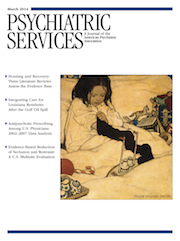The Painted Bridge
Wendy Wallace creates a picture in words of a 19th century English madhouse (Lake House) and of the women confined within. The portrait is accurate (1) and the women’s plights true to the 19th century (2).
It is 1859, and 24-year-old Anna Palmer, newly married (or so she thinks) to the supercilious, sanctimonious, hypocritical Reverend Palmer (20 years her senior), is unjustly deposited into the private madhouse of Querios Abse. He runs the facility tyrannically but unwillingly; he inherited the place from his father. The main plot line is Anna’s plight and her escape to freedoms of all sorts—from the asylum, from the reverend, from the preconceptions of women’s roles in the 19th century. And she literally and symbolically makes her escape by crossing a bridge that is actually no more than a bridge façade.
There are, of course, subplots galore—the dysfunctional family of Mr. Abse, the love interest between Mrs. Palmer and a well-meaning young alienist, Lucas St. Clair. Dr. St. Clair’s efforts to expand the diagnostic tools available to him by making diagnoses through the use of photographic images is in fact one of many failed innovations of psychiatry over the past 200 years. Other subplots concern the visions that guide Mrs. Palmer, the inspection of Lake House by officials with the power to close the place, the power of husbands over their wives, and the abuse of the female patients, including the use of the infamous whirling chair.
Wallace portrays much of this in stark yet poetic language. Mrs. Palmer is diagnosed as having “suppressed catamenia,” “uterine disturbance,” and “hysteria,” the last being something most women of the period suffered from “at some time in their lives.”
St. Clair, on the other hand, opines that “half the female patients in his care had been driven to the edge of reason by their limited lives.” Mrs. Palmer describes herself as “being pulled apart like a piece of knitting” and as a “prisoner here, a prisoner who has committed no crime.” Perhaps the best use of language is the description of the laceration of a woman who killed herself at Lake House by cutting her own throat: “Below it, framed by the lace trim of the chemise, that throat was open from one side to the other in a violent smile, the severed windpipe like an end of macaroni.”
Nineteenth century psychiatry as portrayed in this novel reminds us that, while quite different from contemporary psychiatry, some things have changed very little. St. Clair wonders, for example, “Where’s the merit in discharging people when they’re still ill or saying they’re well when they’re not? It’s pointless. It’s dangerous.” That sounds very much like yesterday’s conversation between the psychiatrist on the psychiatric unit at General Hospital Everywhere and the ABC managed care company.
The Painted Bridge is longer than it should be. The passages describing Mrs. Palmer’s repeated visions are frequent enough to be annoying. But all told, this is a fascinating historical novel, a good read for both those familiar with and those who want to learn more about 19th century alienists in the world of for-profit inpatient treatment. It’s enough to make us think that maybe we shouldn’t have for-profit inpatient treatment in the 21st century.
1 : The Trade in Lunacy: A Study of Private Madhouses in England in the Eighteenth and Nineteenth Centuries. London, Routledge, 1971Google Scholar
2 : Women of the Asylum: Voices From Behind the Walls, 1840–1945. New York, Doubleday, 1994Google Scholar



